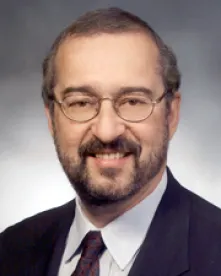In the wake of the decision of the U.S. Supreme Court in Mayo Collaborative Services v. Prometheus Labs (see IP Update, Vol. 14, No. 6) the U.S. Court of Appeals for the Federal Circuit once again wrestled with the issue of when a patent claim is directed to a non-patent eligible “abstract idea.” In the context of a computer implemented invention, a divided panel concluded that a group of patents directed to a computerized trading platform for exchanging obligations so as to eliminate “settlement risk,” defined patent-eligible subject matter under 35 U.S.C. § 101. CLS Bank International v. Alice Corp. Pty. Ltd., Case No. 11-1301 (Fed. Cir., July 9, 2012) (Linn, J.) (Prost, J., dissenting). The dissent sharply argues that the majority not only “resists” the unanimous Supreme Court directive from Prometheus, but moreover “creates an entirely new framework” that permits district courts to avoid even addressing § 101 quicksand at will.
Section 101 Challenges as a Threshold Issue
While recognizing that the Supreme Court in Bilski (see IP Update, Vol. 13, No. 7) characterized § 101 as a “threshold test” that “certainly can be addressed” first (emphasis in original), the majority opinion opens with a discussion of the purpose and role of §§ 101, 102, 103 and 112, emphasizing the discretion available to district courts to “to control the conduct of proceedings before them, including the order of presentation of issues and evidence.”
In case the point was not clear enough (as to whether, when or if a § 101 challenge must be considered by a district court even if raised) the majority reiterated that “consistent with its role as master of its own docket, a district court properly acts within its discretion in deciding when to address the diverse statutory challenges to validity.”
Abstract Ideas
The substantive issue presented was whether the patents in suit are directed to an “abstract idea” i.e., in derogation of the Supreme Court ruling in Prometheus, and thus directed to non-patent-eligible subject mater under § 101. Recognizing that the “abstract idea” test is itself an abstraction, the majority surveyed various Supreme Court cases and, as a subset of that test, the related articulation of preemption as the effective grant of “a monopoly over an abstract idea,” as preemption being the basic evil to be avoided. In summarizing the cases, the Court noted that neither “mere field of use limitations” nor “the addition of ‘post-solution’ activity” could “transform an unpatentable principle into a patentable process.” On the other hand, as the Court explained, § 101 does not bar patent claims that are directed to “an application of a law of nature or mathematical formula to a known structure or process.” (Emphasis in original.)
Against that backdrop, the Court proceeded to analyze the “abstract idea” test as applied to computer-related inventions in terms of the “machine-or-transformation” test (recognized by the Supreme Court in Bilski as a “useful” tool, but not a dispositive test), noting along the way that the “mere implementation on a computer of an otherwise ineligible abstract idea will not render the asserted ‘invention’ patent eligible,” but that “a claim that is drawn to a specific way of doing something with a computer is likely to be patent eligible whereas a claim to nothing more than the idea of doing that thing on a computer may not.” (Emphasis in original.)
The majority concluded “that when after taking all of the claim recitations into consideration it is not manifestly evident that the claim is directed to a patent ineligible abstract idea, that claim must not be deemed for that reason to be inadequate under § 101. Unless the single most reasonable understanding is that a claim is directed to nothing more than a fundamental truth or disembodied concept, with no limitations in the claim attaching that idea to a specific application, it is inappropriate to hold the claim is directed to a patent ineligible ‘abstract idea’ under 35 U.S.C. § 101.”
With its now test in place, the majority criticized the district court for “looking past the details of the claims” and concluded that the asserted claims “require computer implementation,” i.e., an indication that they meet the “machine” prong of the machine-or-transformation test, and “appear to cover the practical application of a business concept in a specific way, which requires computer implemented steps of exchanging obligations.” On that basis, the majority reversed the district court decision to the contrary.
Judge Prost concluded that the asserted claims “are abstract ideas repackaged as methods and systems.” In her view, the majority failed to follow the prescription of the Supreme Court against patenting abstract ideas by focusing on the “computer implementation” aspect of the claims, rather than the "inventive concept" analysis on which the Supreme Court test is predicated.
Practice Note: The USPTO has recently issued examination guidelines for analyzing subject matter eligibility under Prometheus (seeIP Update, this issue). IP Update will report further if the Federal Circuit's Alice Corp. decision results in any further revision of the examination guidelines. On July 27, PTO Dir. Kappos, in his public blog forum, endorced the view of the majority that issues pertaining to §§ 102; 103 and 112 should be addressed prior to consideration of subject matter eligibility under § 101. (See:http://www.uspto.gov/blog/director/entry/some_thoughts_on_patentability)




 />i
/>i

